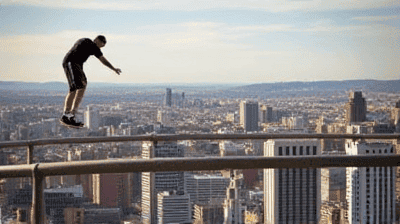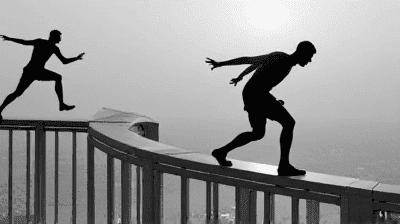

Parkour, often referred to as the art of movement, has gained significant popularity around the globe, transforming urban landscapes into dynamic playgrounds for thrill-seekers. With roots in France, this extreme sport combines physical prowess, creativity, and risk-taking, allowing athletes to move through their environments by running, jumping, vaulting, and climbing. While the freedom of expression and the adrenaline rush of parkour are alluring, some routes present greater challenges and dangers than others.
Parkour is not merely a physical activity; it embodies a philosophy of overcoming obstacles and embracing the environment. At its core, parkour revolves around four key principles:
Efficiency: Athletes strive to find the most efficient routes between obstacles, conserving energy and time in their movements.
Creativity: Parkour encourages individuals to think outside the box, devising unique solutions to navigate urban landscapes.
Flow: Achieving a seamless transition between movements is crucial, as practitioners aim to maintain momentum and rhythm.
Adaptability: Practitioners must adapt their techniques based on the specific environments they encounter, whether they are in an urban setting or nature.
Despite its appeal, parkour comes with considerable risks. Injuries can range from minor sprains and bruises to severe fractures and concussions. Key risk factors include:
Environmental Hazards: Urban environments are filled with potential pitfalls, such as uneven surfaces, sharp edges, and slippery areas that can lead to accidents.
Height: Many parkour routes involve significant elevation changes, increasing the severity of potential falls.
Legal Concerns: Navigating private property or restricted areas can lead to legal troubles, including trespassing charges.
Inexperience: Novice practitioners attempting advanced moves without adequate training significantly increase their risk of injury.

As the birthplace of parkour, Paris offers a plethora of architectural wonders and urban obstacles that make it a favored destination for traceurs. However, certain locations pose more challenges than others.
Jumping from rooftops or navigating narrow ledges in densely populated areas amplifies the risks associated with parkour. The combination of height, urban crowding, and environmental unpredictability makes these routes particularly dangerous.
New York City has become a hub for extreme sports, with its iconic skyline serving as a backdrop for urban exploration. However, many of its parkour routes demand both skill and caution.
The dangers of parkour routes in New York stem primarily from urban congestion and the height of various structures. In such a bustling city, the distractions of pedestrians and vehicles can lead to impulsive decisions that result in injuries.
Tokyo's blend of modernity and tradition creates an intriguing canvas for parkour enthusiasts. While the city offers unique challenges, some routes are fraught with danger.
The dense urban environment, combined with the high traffic of people and vehicles, makes navigating Tokyo's parkour routes particularly risky. A momentary lapse in focus can quickly lead to accidents.
Barcelona has emerged as one of Europe's most vibrant cities for parkour, drawing practitioners from across the globe. Its mix of unique architecture and urban features provides an exciting setting for enthusiasts.
Barcelona's parkour routes are characterized by environmental unpredictability, including traffic, weather changes, and varying surface conditions. Practitioners must also be mindful of local regulations regarding public spaces.
London's rich history and urban sprawl have made it a playground for parkour athletes. However, certain locations within the city pose significant dangers that challenge even the most experienced traceurs.
London's parkour routes include a blend of architectural beauty and hidden dangers. Environmental factors, pedestrian traffic, and structural challenges demand heightened awareness and skill.
Despite the inherent dangers of parkour, many practitioners are drawn to the thrill of pushing their limits. The adrenaline rush of executing a challenging jump or vault provides a sense of accomplishment that is hard to replicate in conventional sports. For many, the exhilaration lies in confronting fears and overcoming physical challenges.
The parkour community thrives on shared experiences and camaraderie. Athletes often encourage each other to explore new routes and attempt new moves. The spirit of collaboration fosters a supportive environment that emphasizes collective growth and development. For many, this sense of community outweighs the potential risks.
Parkour serves as a form of artistic expression, allowing practitioners to showcase their skills and creativity. The beauty of movement becomes an art form as athletes blend athleticism with creativity. Dangerous routes challenge individuals to develop their style, pushing them to innovate with their movements.

Athletes looking to tackle perilous parkour routes must prioritize adequate training and conditioning. Key aspects of preparation include:
Physical Fitness: Developing overall fitness through strength training, flexibility exercises, and cardiovascular workouts is essential. Balanced training helps reduce the risk of injury.
Technical Skills: Practicing fundamental parkour movements, such as rolls, vaults, and jumps, in controlled environments builds confidence and proficiency.
Mental Preparedness: Confronting fear and building mental resilience is vital for success in parkour. Visualization techniques, breathing exercises, and mindfulness can enhance mental focus.
To ensure safety while training or attempting challenging routes, practitioners should consider the following practices:
Progress Gradually: Start with manageable obstacles and gradually increase the difficulty level as skills improve. Never rush into high-risk moves without practicing foundational techniques first.
Use Spotters: Training with partners allows for support and assistance when attempting challenging moves. Spotters can provide feedback and help ensure safety during practice.
Scout Locations: Before attempting a route, assess the environment for potential dangers, such as traffic, unstable surfaces, and environmental hazards. Understanding the layout helps in making informed decisions.
While parkour often takes place in public spaces, it is essential to be aware of local laws and regulations. Key considerations include:
Trespassing Concerns: Jumping onto private property without permission can lead to legal complications. Practitioners should respect boundaries and avoid conflicts with property owners.
Public Safety: Engaging in parkour in crowded areas can pose risks to bystanders. Maintaining awareness and avoiding dangerous stunts in high-traffic areas is crucial.
Community Relations: Building positive relationships with local authorities and businesses can help foster a supportive environment for parkour practitioners. Open communication can lead to the establishment of parkour-friendly spaces.
Encouraging cities to embrace parkour culture can lead to the creation of designated areas for training and practice. Initiatives may include:
Urban Parks: Designing parks with parkour features, such as rails, walls, and adaptable surfaces, can provide safer spaces for athletes to practice.
Community Involvement: Engaging the local community in discussions about parkour can lead to increased awareness and support for athletes. Collaborative efforts can result in positive changes in public spaces.
Advocacy and Education: Educating both practitioners and the public about parkour's benefits can foster understanding and acceptance. Community workshops can encourage local support and promote parkour as a legitimate form of physical fitness.

From towering rooftops to intricate rails, the world of parkour is filled with breathtaking beauty and significant danger. Athletes are drawn to the exhilaration of navigating urban landscapes, pushing themselves to new heights while confronting risks head-on. The spirit of parkour embodies resilience, creativity, and community, transforming the way we perceive our environments.
As interest in parkour continues to grow, it is essential for practitioners to prioritize safety, respect regulations, and nurture relationships with local communities. Embrace the adventure, challenge yourself, and discover the thrill of parkour as you explore the most dangerous routes in major cities around the world.
Copyright © 2024 Challenging XS. All rights by Challenging XS.